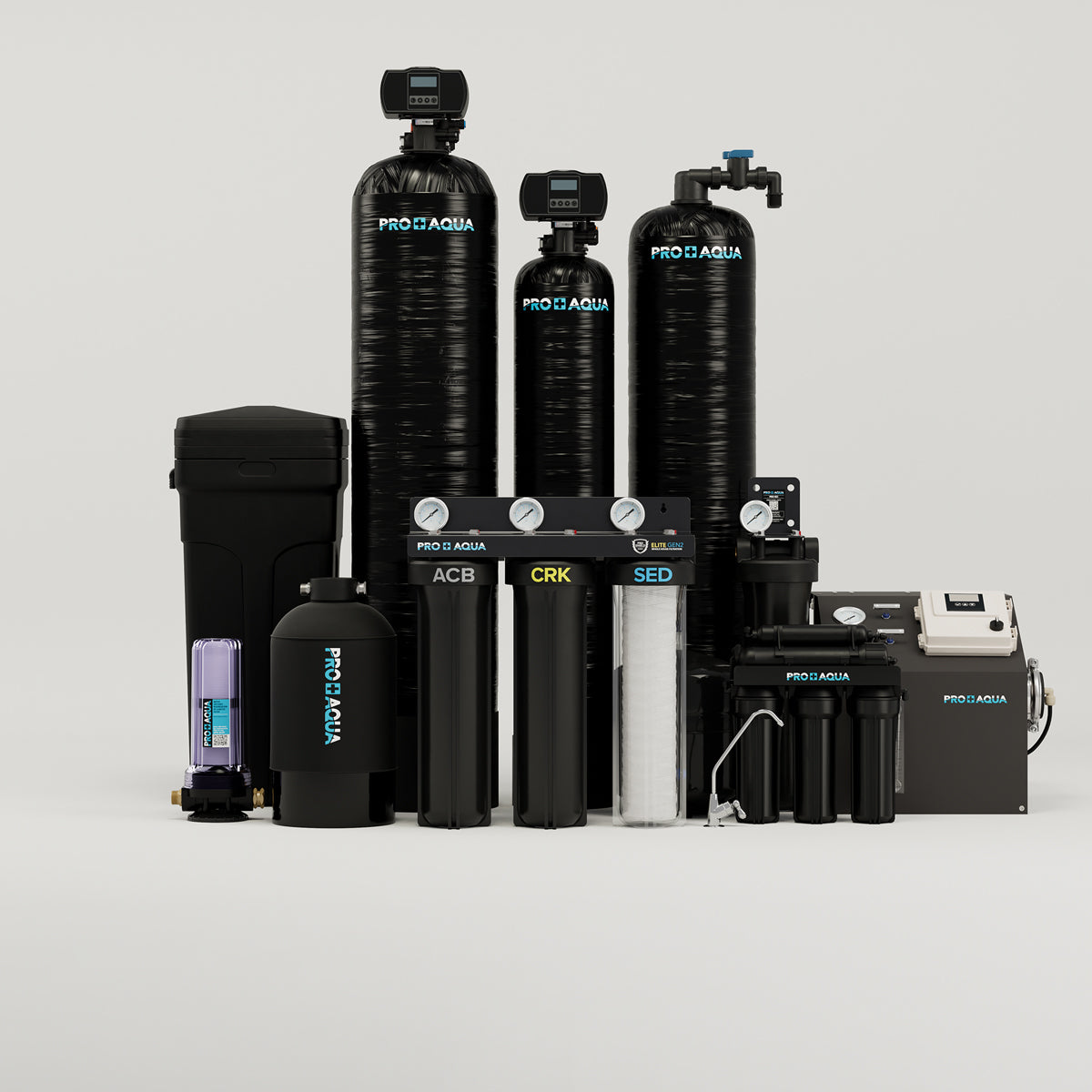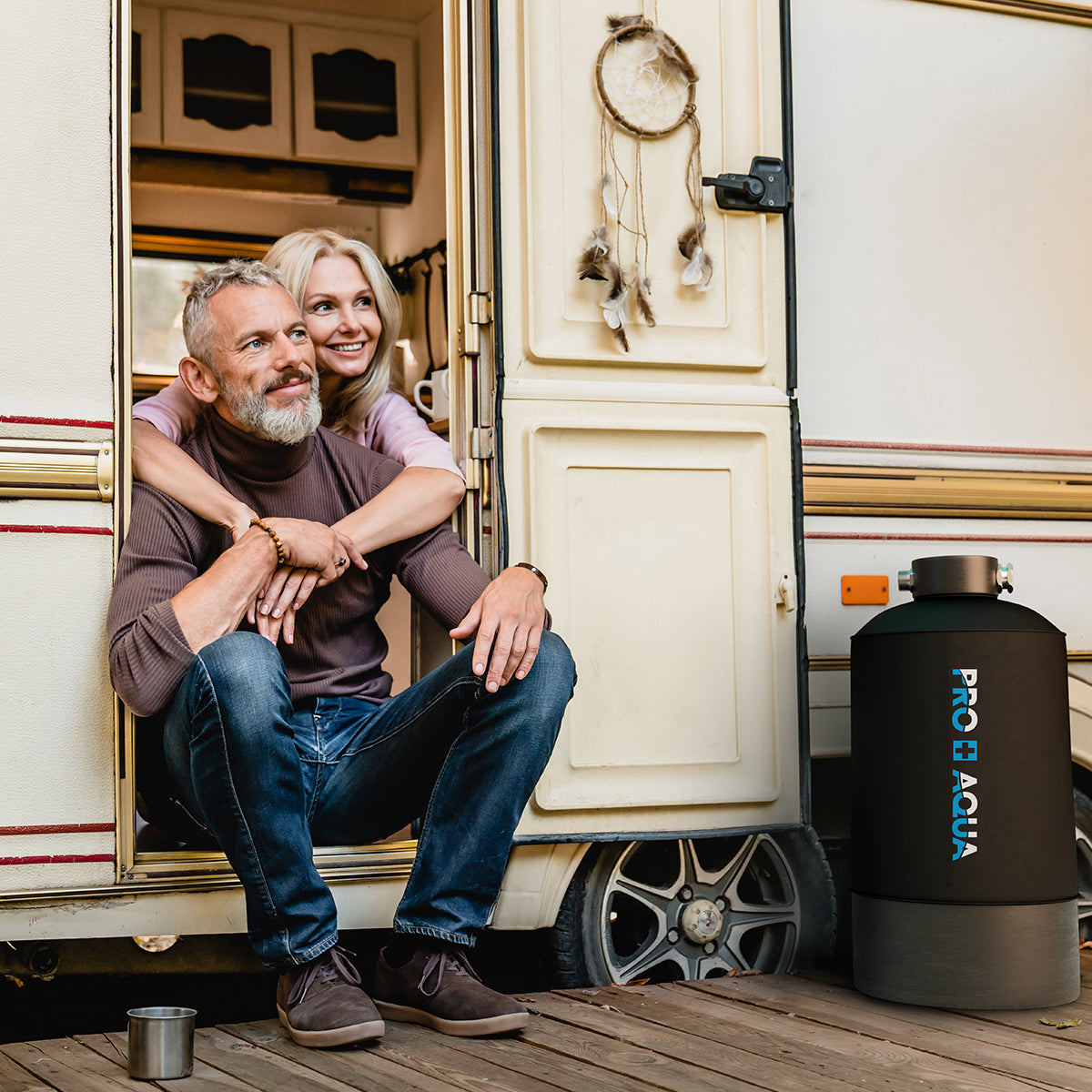Clean water isn’t just a luxury—it’s essential. Whether you rely on city water or a private well, the quality of your water directly impacts your health, appliances, plumbing, and overall home comfort. Poor water quality can lead to strange tastes, unpleasant odors, skin irritation, and long-term damage to your plumbing system.
In this guide, we’ll break down why water quality is so important, how to test your water, and which treatment options can help you take control.
Why Water Quality Matters
Your water might look clear, but that doesn’t mean it’s clean. Here’s why water quality is more important than most people think:
|
Health |
|
|
Hygiene |
|
|
Taste & Odor |
Even if water looks clear, it may taste metallic, smell like rotten eggs (sulfur), or have a chemical aftertaste from chlorine or VOCs. Good water quality ensures your drinking water is fresh and enjoyable. |
|
Appliance Life |
|
|
Environmental Indicators |
Understanding water quality encourages responsible water use and helps communities detect larger problems—like lead contamination or industrial runoff—before they worsen. |
What Affects Your Water Quality?
Several factors determine how clean your water is when it reaches your tap:
- Water Source: Well water and city water often contain different contaminants. Well water may carry more minerals and bacteria; city water may contain chlorine or chloramine.
- Plumbing & Infrastructure: Aging pipes can leach lead or rust into your water supply.
- Regional Conditions: Agricultural runoff, industrial discharge, and seasonal storms can introduce contaminants.

How Water Quality Varies by Region
Your location can dramatically influence the type and severity of water quality issues you face. Here are a few common regional U.S. challenges:
- Southwest: Very hard water due to high mineral content; water softeners are almost always needed.
- Midwest: Agricultural runoff introduces nitrates, pesticides, and fertilizers into private wells.
- Northeast: Older infrastructure often means higher risks of lead and copper in the water.
- Pacific Northwest: Generally soft water but prone to sediment and organic contaminants from heavy rainfall and forestry runoff.
- Florida and Gulf Coast: Sulfur (rotten egg smell) and high iron levels are frequent in well water.
Tip: Check your Consumer Confidence Report (CCR) or well water history for local data—or test your own water to get current, personalized results.
How to Know What's in Your Water
The first step to improving water quality? Test it. Water testing tells you exactly what you’re dealing with—whether it's hardness, pH imbalance, chlorine, iron, or even microbial contaminants.
Testing Your Water at Home
Before investing in any filtration or treatment system, the first step is to test your water at home. Fortunately, you don’t need a lab coat or expensive equipment to get started. With just a basic at-home water test kit, you can quickly identify:
- Hardness (calcium & magnesium)
- Total Chlorine & Free Chlorine
- pH levels
- Iron and copper
- Alkalinity
- TDS (with a digital meter)
If your results show elevated levels—or your water looks, smells, or tastes off—you may want to follow up with lab testing for deeper insights.
At-Home Water Test Kits vs. Lab Tests
Understand the pros and cons of at-home test kits compared to certified lab reports, and when each is appropriate.
While at-home water test kits are convenient and affordable, they do have limitations. Depending on your situation, a certified lab test might offer the detail you need to make confident treatment decisions.
|
Feature |
At-Home Test Kit |
Certified Lab Test |
|
Cost |
$20–$60 |
$100–$300+ |
|
Convenience |
Fast, DIY in minutes |
Must mail in water samples |
|
Accuracy |
Good for basic parameters |
High precision and reliability |
|
Parameters Covered |
Hardness, pH, chlorine, TDS, iron |
Heavy metals, bacteria, pesticides, fluoride |
|
Best For |
General awareness and maintenance |
Health concerns, new wells, persistent issues |
When to Choose a Lab Test:
- You have well water and want to test for bacteria, nitrates, or arsenic
- There are health symptoms you suspect may be water-related
- You need a report for real estate or mortgage purposes
- You want a comprehensive water quality report with exact numbers
Many labs offer mail-in kits with prepaid return envelopes and results in under two weeks. Some also interpret the results and recommend specific treatment options.

How to Read Your Water Test Results
Once you’ve tested your water, understanding the results is key. Here's what common parameters mean and why they matter:
|
Parameter |
Ideal Range |
What It Means |
|
TDS |
< 300 ppm (ideal) |
Measures total dissolved solids. Higher values may indicate mineral, salt, or metal presence. |
|
pH |
6.5–8.5 |
Measures acidity/alkalinity. Too low = corrosive; too high = mineral buildup. |
|
Hardness |
< 60 ppm = soft |
High calcium/magnesium causes scale and appliance wear. |
|
Chlorine |
< 4.0 ppm (EPA max) |
Too much can dry skin, irritate eyes, and affect taste/smell. |
|
Iron |
< 0.3 ppm |
Higher levels stain sinks, clothes, and may clog fixtures. |
|
Nitrates |
< 10 ppm (EPA limit) |
Dangerous at high levels, especially for infants. |
Pro Tips:
- High TDS? Consider reverse osmosis for drinking water.
- Low pH? You may need a neutralizer filter to prevent corrosion.
- Hard water? Install a water softener to prevent scale.
Common Water Quality Issues & What They Mean
|
Issue |
Cause |
Effect |
|
Hard Water |
Calcium & magnesium |
Scale buildup, dry skin, soap scum |
|
High Chlorine |
Municipal treatment |
Bad taste, odor, skin & eye irritation |
|
Cloudy Water |
Sediment or air bubbles |
Poor appearance, potential clogging |
|
Sulfur Smell |
Hydrogen sulfide gas |
Rotten egg smell, unpleasant taste |
|
Iron & Manganese |
Well water mineral content |
Orange/brown staining on sinks & clothes |
|
Bacteria |
Contamination from surface runoff |
Health hazards, especially for well users |
How to Choose the Right Water Treatment System
With so many water quality solutions available, it’s important to choose based on your actual water conditions—not just what sounds good.
1. Start With Testing
- Use a DIY test kit for quick insights, or opt for a lab test if you need detailed results.
- Know your key metrics: hardness, pH, TDS, chlorine, iron, nitrates, bacteria.
2. Solve for the Most Pressing Issues
- Hardness: Choose a water softener
- Taste & Odor: Add a carbon filtration system
- Sediment: Install a sediment pre-filter
- Bacteria: Consider a UV disinfection system
- Heavy Metals or TDS: Use reverse osmosis for drinking water
3. Combine Systems If Needed
Many homeowners benefit from a whole house filtration system + reverse osmosis for well water.
Water Filtration: The First Line of Defense

Water filters like the PRO+AQUA Whole House Filter System remove sediment, chlorine, VOCs, and other harmful substances. They are ideal for homeowners who want better water for drinking, showering, and protecting their plumbing.
Types of Water Filters
Let’s expand on a few filter types so you know which fits your needs best:
- Sediment Filters: Catch sand, silt, rust, and larger particles. Ideal as a first-stage filter to protect appliances.
- Carbon Filters (Activated Carbon): Remove chlorine, VOCs, and bad tastes or odors. Common in pitcher filters, under-sink systems, and whole house units.
- KDF Filters: Effective for removing heavy metals like lead and mercury; often combined with carbon.
- Multi-Stage Whole House Filters: Combine sediment, carbon, and specialty media for broader protection. Good for homes on municipal water.
Water Softening: Eliminate Hard Water Problems
Hard water causes scale buildup, cloudy dishes, stiff laundry, and itchy skin. A water softener like the PRO+AQUA Whole House Softener System uses ion exchange to remove calcium and magnesium. It’s also about preserving your investment in plumbing, water heaters, and appliances.
How Softeners Work
- Ion exchange swaps calcium and magnesium for sodium or potassium.
- Regenerates automatically using salt brine (for salt-based systems).
Salt-Free Conditioners: Great for those avoiding salt. These don’t remove hardness minerals but prevent them from sticking and forming scale.
Benefits You’ll Notice:
- Less soap scum in tubs and showers
- Cleaner, shinier dishes and glassware
- Softer, smoother skin and hair
- Clothes that feel cleaner and last longer
Perfect for areas with naturally hard water or older plumbing systems.
Reverse Osmosis: Ultra-Clean Drinking Water

RO systems like the PRO+AQUA 5-Stage RO System use a semi-permeable membrane to remove up to 99% of dissolved solids and contaminants like lead, fluoride, arsenic, and nitrates. Reverse osmosis offers one of the most thorough filtration methods available, especially for drinking water.
Commonly installed under the kitchen sink, ideal for:
- Cooking and drinking
- Aquariums and ice makers
- Homes with specific health concerns
Key Stages of RO
- Sediment Filter: Removes dirt and rust
- Carbon Filter: Removes chlorine, chemicals
- RO Membrane: Filters dissolved solids, heavy metals, fluoride
- Post-Filter: Polishes the taste
Some systems even include a remineralization stage to restore healthy minerals like calcium and magnesium, improving taste and pH balance.
RO systems often pair well with pre-filters for optimal performance.
Ongoing Maintenance: Don’t “Set It and Forget It”
Even the best water treatment systems require a little upkeep to stay effective:
- Filters: Replace every 3–12 months depending on system type and usage.
- RO Membranes: Typically last 2–3 years.
- UV Bulbs: Replace annually for full effectiveness.
- Water Softeners: Refill salt as needed and clean brine tank once a year.
Conclusion: Better Water Starts With a Simple Test
Don’t wait until your water causes problems. Whether it’s a strange smell, scale on your shower door, or just peace of mind—testing your water is the best first step.
From there, you can explore smart solutions like whole house filters, softeners, or reverse osmosis for targeted treatment.









Leave a comment
This site is protected by hCaptcha and the hCaptcha Privacy Policy and Terms of Service apply.